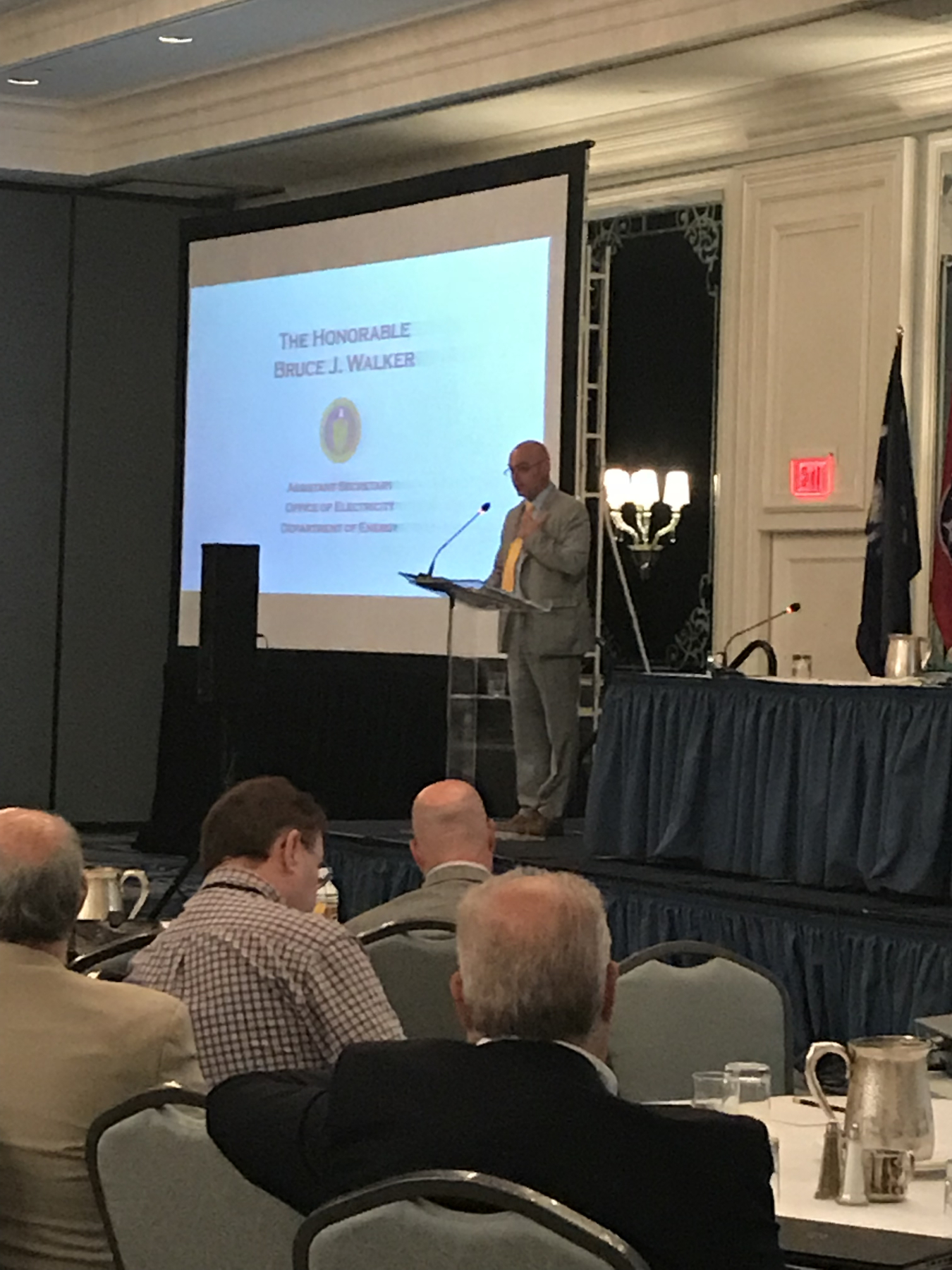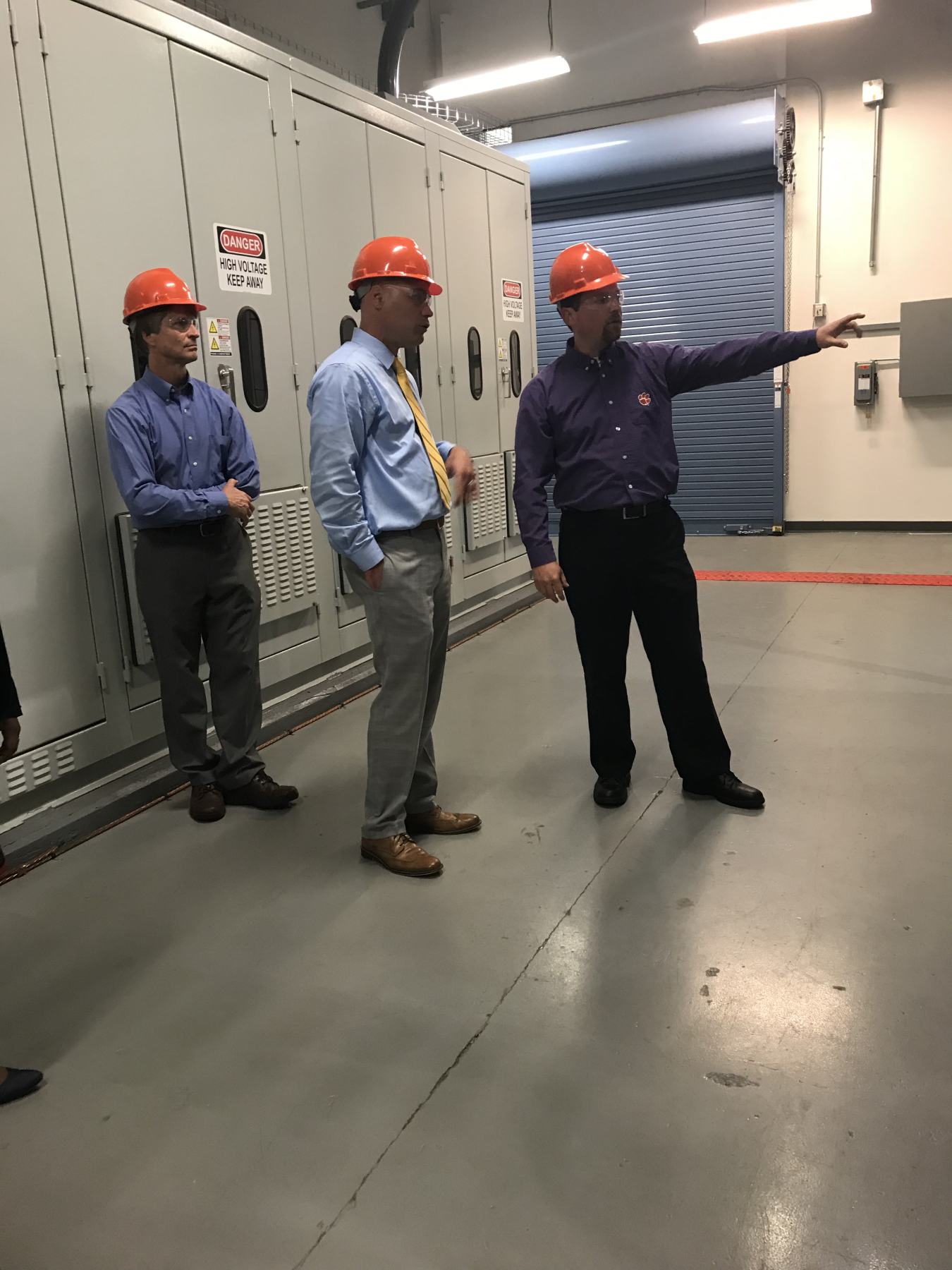Strengthening the Security and Resilience of the Nation’s Critical Energy Infrastructure
July 2, 2018A secure and resilient power grid is vital to national security, a strong economy, and the services Americans rely on every day. Here at the Office of Electricity (OE), we work closely with the private and public sectors to ensure our critical energy infrastructure is secure from all hazards, both manmade and natural. As a science, technology, and energy security agency, DOE takes a comprehensive, Intelligence Community informed view of resilience, recognizing the energy sector has been the main focus of cyber and physical threat attacks.
One way that OE is addressing the evolving energy landscape is by focusing on five priorities: a North American grid model, an operational strategy for cyber and physical threats, megawatt-scale grid storage, use of high-fidelity, low-cost sensing technology for predictive and correlation modeling for electricity and for oil and natural gas systems, and support of Puerto Rico and the U.S. Virgin Islands for long-term resiliency improvement. Recognizing that we must maintain a robust pipeline of next generation technologies, we also support R&D efforts through funding opportunities such as last month’s $7.5 million announcement to spur the innovative design of more flexible and adaptable large power transformers, a fundamental component of the grid.
Collaboration and innovation are critical. I recently traveled to South Carolina to meet with two groups of partners focused on making their communities more resilient – the Southeastern Association of Regulatory Utility Commissioners (SEARUC) and the Clemson University Restoration Institute. In Charleston, nearly 300 regulatory utility commissioners gathered to discuss different aspects of “Effective Utility Regulation – All in the Public Interest”. In my keynote speech, I discussed how DOE is protecting Americans by improving the security and resilience of the nation’s energy infrastructure.

In March, 2017, U.S. Secretary of Energy Rick Perry directed staff to undertake an assessment of the reliability and resilience of the electric grid and provide an overview of the evolution of electricity markets. One of the report’s key findings was that changing circumstances are challenging electricity markets. Another finding was that while markets recognize and provide for reliability, they must evolve to better address resilience. The report also found that a combination of market and policy forces have accelerated the closure of a significant number of traditional baseload power plants and may potentially harm grid reliability and resilience. A continued comprehensive regional and national review is needed to determine how a portfolio of domestic energy resources can be developed to ensure grid reliability and resilience.
Presidential Policy Directive 21 defines resilience as “the ability to prepare for and adapt to changing conditions and withstand and recover rapidly from disruption.”
The recent creation of the Office of Cybersecurity, Energy Security, and Emergency Response (CESER) elevates and intensifies the Department’s focus on energy infrastructure protection and will enable more coordinated preparedness and response to natural and man-made threats. As Secretary Perry said in announcing the establishment of CESER, “DOE plays a vital role in protecting our nation’s energy infrastructure from cyber threats, physical attack and natural disaster, and as Secretary, I have no higher priority. This new office best positions the Department to address the emerging threats of tomorrow while protecting the reliable flow of energy to Americans today.” Through the support of innovation as seen in the recent $25 million announcement for the development of new cybersecurity technologies, CESER will continue pursuing innovative cybersecurity solutions to the cyber threat. Together, OE and CESER will work closely on the priority of national security and resilience.
During my visit to Clemson University’s Restoration Institute later that day, I met with Clemson University researchers, utility industry partners, and Savannah River National Laboratory personnel and toured two facilities where important research is being conducted: the SCE&G Energy Innovation Center and the Duke Energy eGrid. Their commitment to working together to broaden the understanding of what is needed and what is possible is another great example of the progress being made to master the threats and challenges facing the nation’s energy critical infrastructure.


